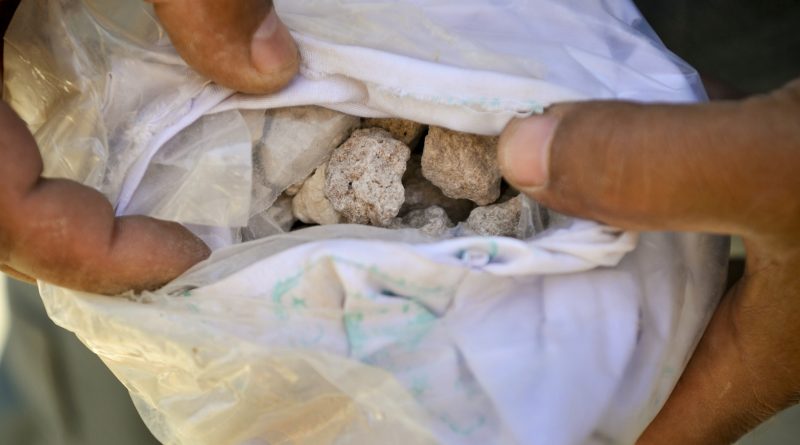FOCUS on Narco-States: Afghanistan
Hamzah Khan
Staff Writer
Afghanistan, a nation embroiled in war for nearly 20 years, is home to one of the worst narcotic epidemics in the world. Opium cultivation, which is turned into heroin, has become an important livelihood for thousands of people. According to the Australian Strategic Policy Institute, the opium industry makes up approximately 7 percent of the country’s GDP but could potentially be much higher, and supplies 90 percent of the world’s heroin. This arrangement has allowed the Taliban to retain control over many rural areas by giving people a stable source of revenue while the Afghan government remains fractured by corruption and lack of resources. Failed counter-narcotics campaigns by the U.S. and Afghan governments have only strengthened the Taliban’s legitimacy in the region.
According to Rolling Stone, opium cultivation began large-scale production in the late 1980s during the Soviet invasion of Afghanistan. The CIA, seeking to undermine the Soviets, covertly supported opium traffickers. The drug trade continued to take off throughout the 1990s amid a civil war until the Taliban took control of the country in 1996. They imposed a complete ban on opium in 2000, bringing Afghanistan down to its lowest levels of production in decades and ever since.
After September 11, 2001, and the subsequent U.S. invasion that deposed the Taliban, the drug trade exploded and quickly turned Afghanistan into the world’s most prominent narco-state, Rolling Stone says. The province of Helmand, largely controlled by the Taliban, became the epicenter of opiate cultivation – previously empty swaths of farmland became bustling opium plantations. The Taliban raises hundreds of millions of dollars annually from the drug trade according to BBC News. The Afghan government led by Hamid Karzai was heavily involved in the drug trade as well, with the president appointing former drug lords as provincial governors and heads of anti-corruption agencies. The drug trade has become woven into every aspect of the country, from the government to the economy to people’s livelihoods.
The widespread availability of drugs has had a large impact on the civilian population as well. The Brookings Institute reports that nearly 5 million Afghans are addicted to some form of opioids or hard drugs, including nearly 2-4% of all adults. The opium industry also employs nearly 600,000 people and provides a source of income for thousands who live below the poverty line, including child opium harvesters. In areas with strict anti-drug enforcement, thousands lost their livelihoods and many farmers turned towards the Taliban, who allowed them to harvest their crops.
The government has tried many times, unsuccessfully, to stop opium production by promoting other less valuable crops. Alternative livelihood programs sponsored by the U.S. and UK, including paying farmers to destroy their opium fields, failed spectacularly as the systems were stymied by corruption. The Taliban took this opportunity to strengthen their position with most of the rural population by providing them with security.
The U.S. has also attempted counter-narcotics measures in Afghanistan through aerial bombing campaigns. The most recent example was Operation Iron Tempest which started in 2017. This operation was intended to destroy the drug dens where opium is turned into heroin, thus cutting off a significant revenue source for the Taliban, reports BBC News. These aerial bombing campaigns were swift and precise in targeting heroin “labs” but killed many civilians. The problem, however, was that these “drug labs” were little more than mud huts that were rebuilt within days. Furthermore, the majority of the heroin labs hit were inactive sites and only 2 out of 23 targets were actively producing heroin when they were bombed. The operation was a massive failure, and to this day opium is being grown on nearly 1,000 square miles of land. TIME reports that the U.S. has spent nearly $9 billion on counter-narcotics in Afghanistan since 2001. Despite this huge investment, Afghanistan today produces 85% of the world’s opium supply.
Afghanistan has only been able to thrive as a narco-state due to its constant state of war for the last 20 years. Foreign intervention has decimated the country, causing the illicit drug trade to become rampant and leaving a destabilized government unable to respond. In February 2020, the U.S. and Taliban signed a peace deal stating that the U.S. would fully withdraw troops by May 2021, signaling an end to the decades-long war, reports DW. In the presence of a stable government, the drug trade could slowly be phased out as peace and stability allow other sectors of the economy to grow. As far off as this may seem, only the presence of peace can reform the world’s premier narco-state.


